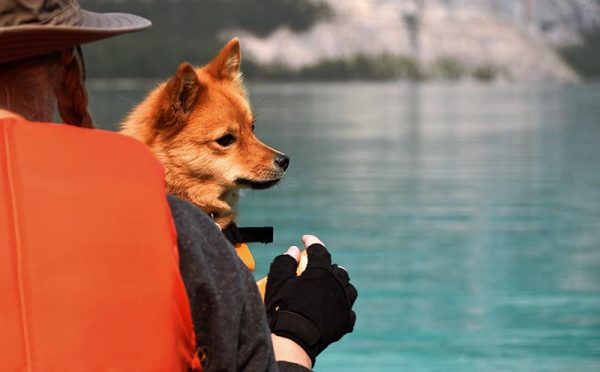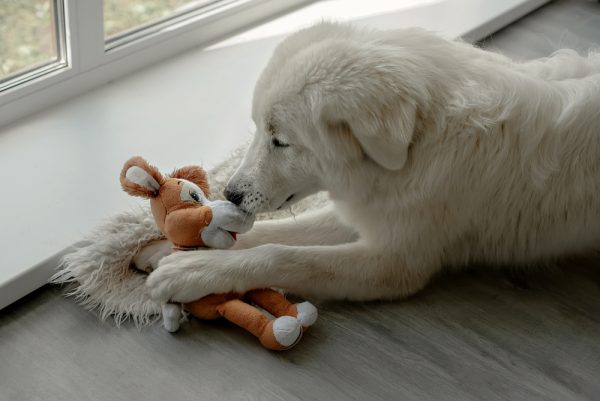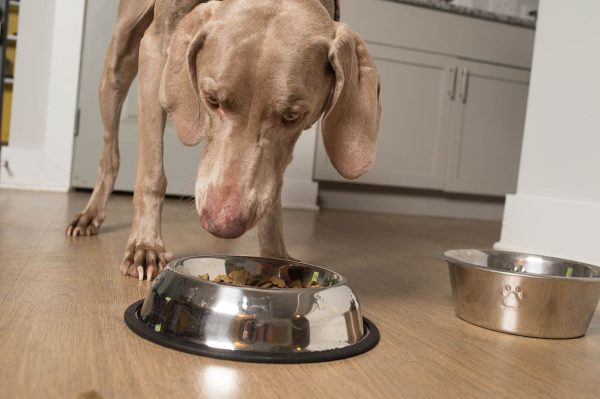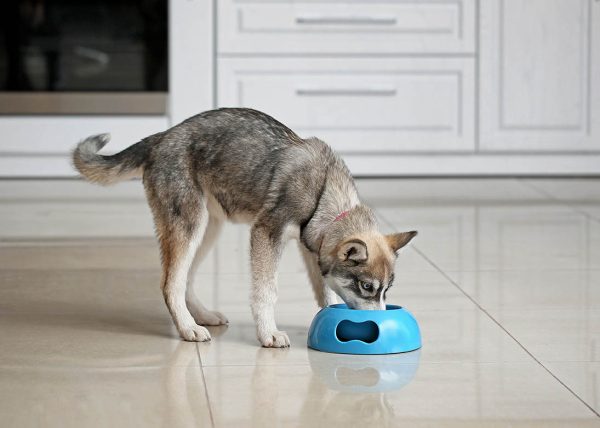If you live in a house with multiple stories, it may be necessary to keep your dog out of one of the levels of the house. Whether it’s because you have a new baby or your dog is recovering from surgery and needs to avoid going up and down stairs, there are things you can implement to keep your dog from going upstairs. Be patient while you work through this, though, because it can be time-consuming to teach your dog not to go upstairs, especially if they’re used to being able to.

The 8 Tips for Keeping Your Dog From Going Upstairs
1. Teach Them Verbal Commands
Obedience training is important for multiple reasons, but especially because it can keep your dog safe by keeping them out of places and situations they shouldn’t be in. Training “no” and “stay” are the simplest ways to keep your dog from going upstairs. Simply give them one of the commands whenever they try to go upstairs. However, you can teach your dog other commands, like “come down” and “place” near the bottom of the stairs. In some cases, your dog’s place may need to be away from the base of the stairs if they may be tempted to go up them.
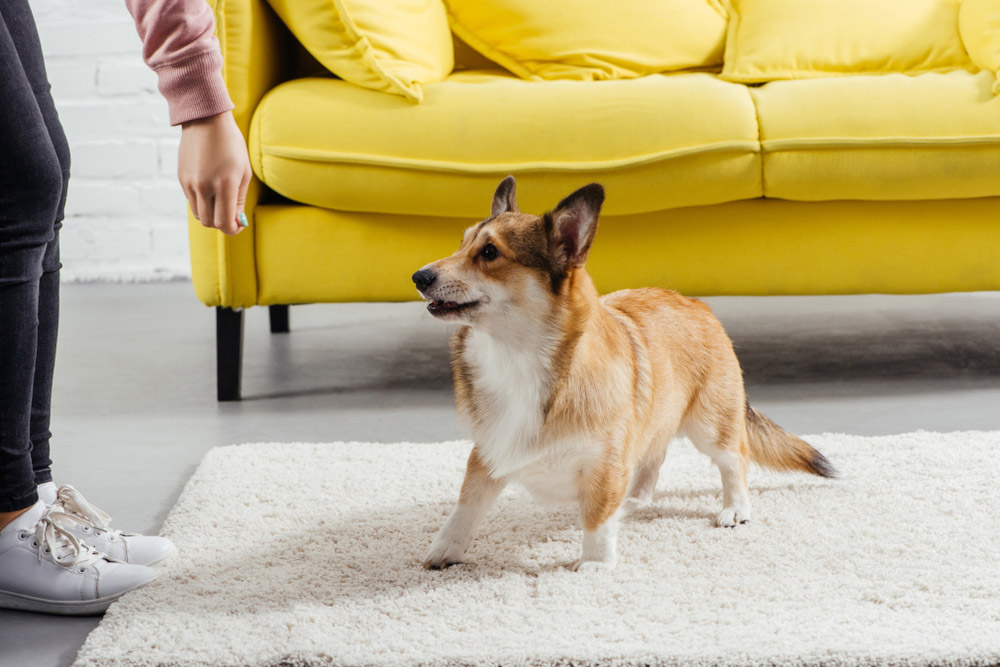
2. Use Positive Reinforcement
Most dogs take to positive reinforcement training well because it provides them with confidence and helps build trust between the two of you. Positive reinforcement can involve verbal praise, treats, toys, or other high-value rewards. Positive reinforcement training works best in conjunction with verbal commands. Use rewards and praise to encourage your dog to repeat a behavior, which, in this case, would be choosing to not get on the stairs or coming back down the stairs when commanded.
3. Utilize Deterrents
There are a variety of deterrents that can be used to discourage dogs from getting on your stairs. Typically, deterrents are objects that your dog will have to step on to go up the stairs, and these objects typically have a texture or create a sensation that your dog doesn’t like.
Things that are commonly used as deterrents include tin foil, sticky shelf liners, tape facing sticky side up, upside-down carpet runners, and commercial deterrents. Make sure you choose items that are not going to harm your dog when they step on them.

4. Create Barriers
Baby gates are the most common and effective barrier that people use to keep their pets downstairs. They come in a wide variety of widths and heights, as well as different features, like doors, cat doors, and quick-release latches. You can place a baby gate at the bottom or top of your stairs, depending on your specific need. Other barriers you can use to keep your dog off the stairs include furniture, fireplace grates, and panels.
5. Remain Consistent
The key to keeping your dog from going upstairs is to be consistent with your training. This means that everyone in the household needs to be on board with not allowing your dog to go upstairs. If some people allow it and others don’t, then your dog will be confused and maybe even become anxious because they don’t fully understand what’s expected of them. Always be consistent when training your dog to avoid loss of trust and confidence.

6. Keep Them Exercised
A dog that is bored and full of extra energy is more likely to disobey the rules and less likely to listen to commands or learn new things. Provide your dog with plenty of exercise every day to burn off any excess energy they may have. The amount of exercise that your dog needs will vary depending on their breed, age, weight, health, and personality, but the vast majority of dogs should be given some form of exercise every day.
7. Provide Enrichment
Enrichment activities provide exercise for your dog’s brain, which helps keep them happy and healthy. If you provide your dog with an enriching and enticing environment downstairs, then the temptation to go upstairs will be greatly reduced. Food puzzles, games, new toys, scent training, and other activities that work your dog’s brain are excellent for creating an enriching environment. The more appealing you can make the downstairs, the easier things will be for you, so get creative to keep your dog interested in staying out of your upstairs.

8. Start Crate Training
Training your dog to comfortably spend time in a kennel is a key skill for your dog to learn. Crates are a tool that allows you to keep your dog safe when they can’t be supervised or are in the way, as well as provide them with a safe space of their own that they can feel safe and comfortable in. Ideally, crate training should begin as soon as you bring your new puppy home, but adult dogs can learn to use a crate as well. Crating your dog will keep them confined when you aren’t able to ensure they don’t go upstairs. Ask a vet about the best crate training techniques so you can keep the things smooth.
If you need to speak with a vet but can't get to one, head over to PangoVet. It's our online service where you can talk to a vet online and get the advice you need for your pet — all at an affordable price!


Will It Make My Dog Sad to Not Go Upstairs?
Many of us struggle with doing things that we perceive may hurt our dog’s feelings. In some cases, things we do may cause stress or other negative feelings in our dogs. The potential for hurting their dog’s feelings is often the reason that people do not make rules like keeping their dog out of their upstairs or off of furniture. However, sometimes these rules are necessary for the safety and comfort of everyone.
Dogs are intelligent animals that can learn to adjust to new things at any age. Because of this, you shouldn’t guilt yourself for making rules to keep your dogs out of certain areas. It may take time and adjustments in routine, but your dog will eventually adjust to the new rules.

Conclusion
Some dogs may be more challenging than others when it comes to teaching them to stay downstairs. Curious and stubborn dogs may take longer to train not to go upstairs. Being consistent in your training methods and getting the entire household on board with the rule to not allow the dog upstairs will lead to success. Oftentimes, you will need to combine multiple methods mentioned previously to fully train your dog to not go upstairs.
Featured Image Credit: Przemek Iciak, Shutterstock


